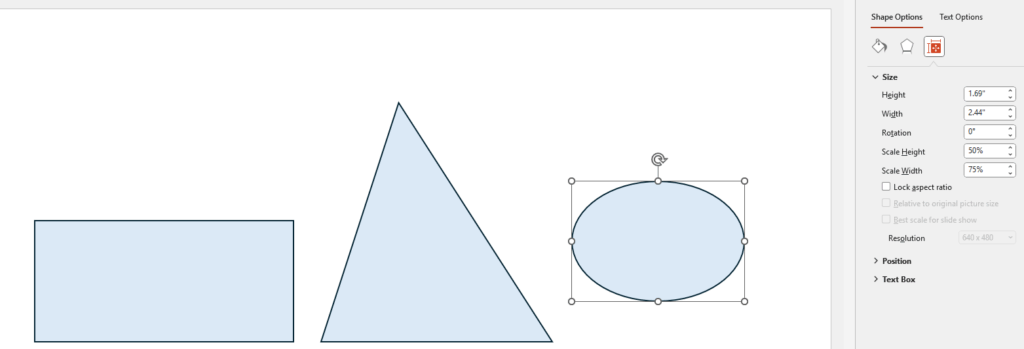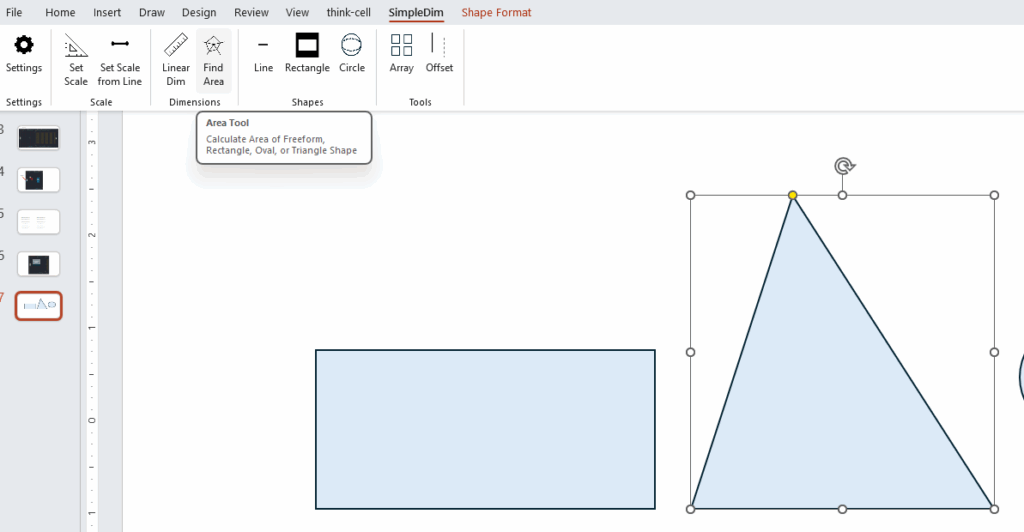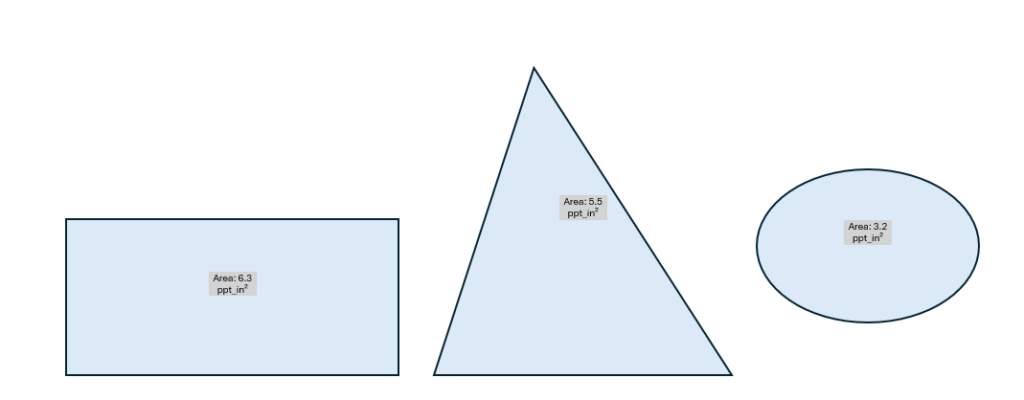Sometimes you want to measure the area of a shape in Powerpoint. Unfortunately, Powerpoint alone offers limited options for doing this. You will have to get out a calculator and a ruler and maybe some old geometry formulas!
Why would you need to find an area? There are many reasons. Most of them have to do with space planning on layouts, site plans, or concepts.
“How many square footage is dedicated to that client?” You don’t want to have to answer “um, let me ask the engineer with CAD” or “let me count the rectangles and multiply by the gridlines”. You want an easy-to-use tool in Powerpoint to answer the questions quickly, or help you draw and figure out how to use the space.
The good news is that SimpleDim offers a great tool for finding shape areas in Powerpoint. It will even find areas of shapes in the units and scale you need, at the touch of a button. Let’s dive in.
PowerPoint’s Native Functionality
Powerpoint offers limited options for finding shapes on its own. Let’s say you have some standard shapes:

Right-click and open up the Format Shape menu. Navigate to the Size and Properties pane. You’ll see that under “size”, you can see or enter the height and width of the selected shape. This is all the information that Powerpoint gives you about the area of the shape. You have to figure it out!
Finding a rectangle’s area is pretty easy. You can multiply Height by Width.
Triangles are a little trickier. For a right triangle, it’s .5 * height * width. Not too bad, but it’s still a calculation!
And for the ellipse, well, do you remember the formula? In case you don’t, here it is:

Where a and b are the different radii from the top and the side. To find the radii from Powerpoint’s measurements, you need to divide each of height and width by 2.
So to recap: to find area of those shapes, you need to:
- Select the shape
- Open the Format Shape pane
- Navigate to the Size and Properties Pane
- do the math for the shape based on the given height and width
And that only gets you too the area in Powerpoint inches! What if you have to scale that to something else, like finding how many square feet are in an area at a production plant?

This type of problem is where SimpleDim really excels. Let’s take a look.
SimpleDim Area Function
SimpleDim comes with the Find Area function for common shapes. It is in the ribbon in the Dimensions section right next to the Linear Dimension tool for finding distances between points:

Pressing the button instantly calculates the area for designated shapes and puts the area in a text box on the shape:

“That’s great” you say, “but what about scales? I want to know the square footage of the shape you showed earlier!”
Scaled Units and Precision In Area Tool
To find the square footage, we first have to set the scale for the page. The way we’ll do this for a drawing is with the Set Scale From Line tool. Once we set the scale to 1″ = 44′, we can select the rectangle on the drawing, and press the Find Area tool. Voila!

Uh oh! We got the dimension in square inches. That is not very useful. So then we go to SimpleDim ribbon, press Settings to open the Settings task pane, and adjust the units to square feet, and precision to 0 decimal places for readability:

Now we see that the rectangle has an area of 17,868 square feet. That’s much better!

FreeForm Shape
There may be a special case where you need to find an area of an irregular shape. Yes, I’m talking about the FreeForm Shape in Powerpoint :

This shape can be used to draw continuous line freeform shapes or click-point-click line-based shapes.
This is where SimpleDim really shines. If you have a freeform shape, SimpleDim can still calculate the area of the shape, even when doing it by hand would be difficult or take a long time.
Just select, click, and you get the area:

As you can imagine, this can save a lot of time in concepting or answering questions about layouts and how space is used.
If you’ve ever found yourself guessing at space usage on a Powerpoint slide, go to SimpleDim.com and sign up for the free trial. 30 days, all features, no credit-card – we’d love to hear what you think!